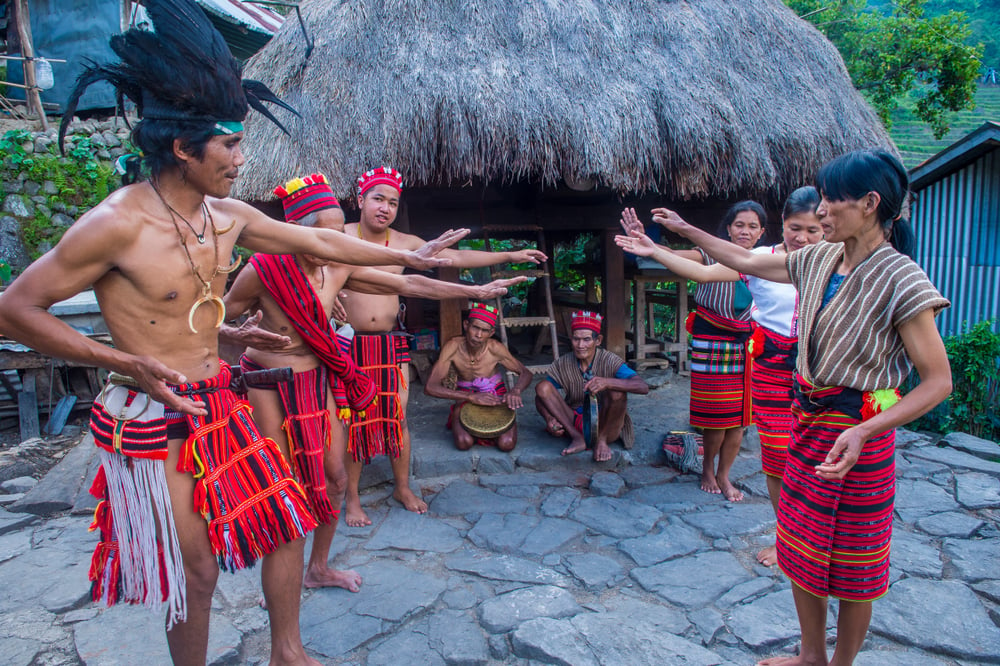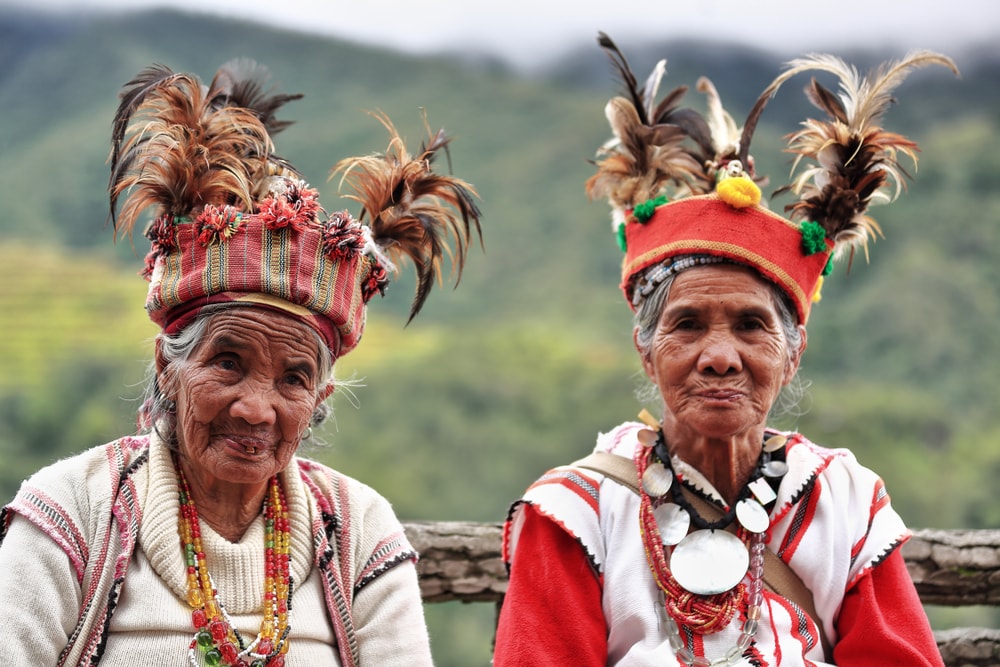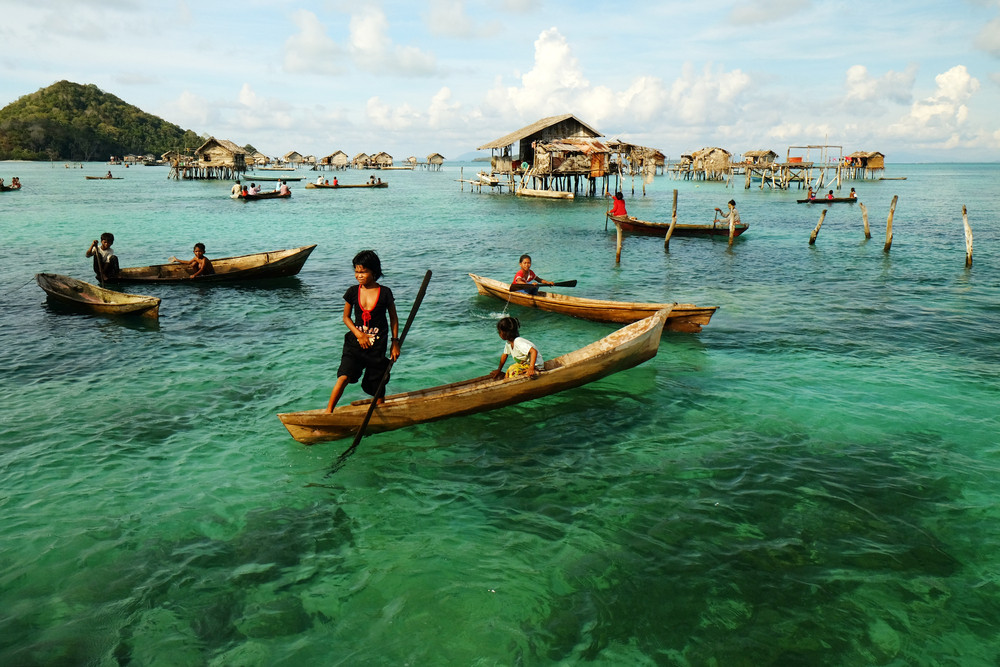It’s no surprise that the Philippines has diverse cultural practices, customs, and organizations because it comprises approximately 7,600 islands and is divided into three main island regions. They are Luzon which is located in the northern part of the Philippines; the Visayas, which lies in the middle part of the country; and, last but not least, Mindanao, which occupies the country’s southern area.
Tourists who experienced the Philippines’ culture, traditions, and natural beauty fell in love with our cuntry, its people, and its customs, beliefs, and people—especially with the indigenous tribes who had preserved the nation’s morals and values before foreign invasion.
Indigenous Tribes
Indigenous tribes have managed to preserve their cultural identity despite marginalization and lack of recognition and is among the poorest, least affluent, and most disadvantaged elements of society.
Indigenous communities generally lived in the highlands and were therefore unaffected by Spanish or American colonization, which is why they could keep their rituals and traditions.
The Two Major Ethnic Groups In The Philippines
Did you know that there are two major ethnic groupings in the Philippines? Yes! And with various highland and lowland indigenous tribes inhabit the country’s northern and southern sections.
The indigenous peoples in the nation’s northern half are known as Igorots. In contrast, the non-Muslim indigenous tribes of the south are known as Lumad. Let’s get to know them one by one!
Igorot Tribes
The first one is the Igorots, the indigenous people known for a group of several tribes located in the northern part of the country; most of these tribes live in the Cordillera Region’s Mountain ranges. Igorots are upland tribal groups well-known for their rice cultivation.
The Ifugao people built the Banaue Rice Terraces, commonly known to as the “eighth wonder of the world.” The ancestors of this indigenous tribe developed an irrigation system of rice terraces in the Ifugao mountains more than 2000 years ago. It is one of the cultural landscapes in the Philippines that attracts not only the locals but also foreign visitors.

Culture and Traditions
Igorots believe in spirits and greatly respect the cycle of life and death. Most of them are still practicing the “Daw-es.” It is a ritual after a massive death to drive away the evil spirit that may cause deaths and tragedies. It is also their way to cleanse the minds of those left behind by their loved ones, the rescuers, and the survivors.
The ritual is facilitated by a native priest called “mambunong.” The ritual includes the killings of dogs offered to “Kabunyan.”
The clothes of the Igorots are notable since we have been taught about them in elementary schools. The tribes’ men usually wear “wanes” or the long strips of loincloth, which are handwoven by the locals, while the indigenous women wear some kind of skirts wrapped around their waist, which they call “lufid.” Most indigenous leaders have tattoos that symbolize ranks and power.
Each of the tattoos on their body represents their achievements. Igorots can speak different languages and dialects such as Bontoc, Ilocano, Itneg, Ibaloi, Isnag, Kankanaey, Bugkalot, Kalanguya, Isinai, Filipino, and English.
Lifestyle
These tribes have a different way of life from those in the hustling and bustling cities such as Makati, Manila, and Taguig. We can say that they are thriving in terms of agricultural farming since the main job of these people is cultivating rice and potatoes.
one of their economic activities is to breed pigs, cows, and chickens is one of their economic activities.
The y use these animals as food and as sacrifices when there was a ritual and as sacrifices.
They also weave clothes, and most of them are the ones that they wear each day.
Some people from other regions visit the Igorot area to experience the way of life of these native folks. It sounds like a must-not-miss experience, right?
The Bontoc, Ibaloi, Isneg, Kalinga, Kankanaey, and Tinguian tribes are also part of the Igorot tribe. Other indigenous groups in the north include the Isnag of Apayao, the Gaddang of Kalinga and Isabela provinces, the Ilongots of Luzon’s eastern highlands, the Sierra Madre, and the Caraballo Mountains. The Ilongots, also known as The Bugkalot, are noted for their ferocity and cultural rigidity.
Lumad Tribes
These indigenous tribes are primarily located in Mindanao and Western Visayas in the southern part. These remaining non-Muslim communities in Mindanao are known together as the Lumad – a Cebuano name that means’ ‘native’ or ‘indigenous.’
The Lumad tribes include the Blaan, Bukidnon, Higaonon, Mamanwa, Mandaya, Manobo, Mansaka, Sangir, Subanen, Tagabawa, Tagakaulo, Tasaday, and T’boli.
The Manobo also contains large ethnic groupings such as the Ata-Manobo, Agusan-Manobo, and Dulangan-Manobo. The number of the Manobo tribe is unclear because they live in core regions in the main provinces of Mindanao.

Culture and Tradition
Their clan is well-known for their tribal music, generated using musical instruments they built. Their tribe is perfect for people who are interested in tribal music. If you are into this genre, you must experience hearing them live!
Since they are non-Christian folks, they only believe in spirits and gods. There is a god for the land, harvest, and water for them. They also believe that the mountains are sacred, and the Lumads greatly respect them. It is also a belief to them that illness and death are the way of God to show their disappointment and anger.
Tribal Ceremonies
And just like Igorots, the tribes also engage in animal sacrifices. Still, the difference is that they kill animals during tribal ceremonies, which they use as an offering to the gods and goddesses to give them protection, good harvest, and health. It is also their way of showing gratitude for the good karma that they are receiving.
These folks speak several languages and dialects in the country, such as Manobo, Cebuano, Hiligaynon, Filipino, and English.
Lifestyle
Lumads are good at farming, but they are also learning and improving in sustainable agriculture through education. Most of them are basket weavers, farmers, hunters, and fishermen.
They usually cook their food in banana leaves and bamboo on top of a burning tree log. With the help of skill development programs backed by the government and other people who have faith in their ability, their way of life is gradually improving.
Other Big Ethnic Groups In The Philippines
Badjao
Sea tribes is all around Southeast Asia. With an estimated population of 400 thousand, the Badjao are the most populous. They are an indigenous ethnic group in the Philippines that has been there for at least 500AD.

For over 1500 years, Badjao has been employing sustainable fishing practices. However, during the last 50 years, the Philippines has seen a spike in population and severely decimated fish stocks, leaving the Badjao with nothing to continue their livelihood. Like many other indigenous peoples in the Philippines, they seems a forgotten tribe.
Children in a normal seaside town frequently play and swim in water intended for human waste disposal. This causes a variety of health problems, including gastrointestinal disorders, eye illnesses, and skin infections such as scabies, to mention a few.
Children get hurt when using the tall stilt walkways, and occasionally they even get killed. Children are particularly vulnerable to financial difficulties.
Their only option, which many Badjao families cannot afford, is education. They are illiterate and usually shunned by the majority population, which prevents them from thriving in modern society.
Sea Gypsies
They are known as “sea gypsies” since they dwell and fish in coastal locations, live in extreme poverty and are frequently outside public help owing to their itinerant lifestyle. As a result, many join the ranks of beggars in Philippine cities or dive for cash dropped by boat passengers. They attempt to make ends meet by working as divers, fishermen, and navigators on the water.
Still, most have relocated to neighboring countries such as Malaysia and Indonesia because of regional disputes. In contrast, those who have remained in the Philippines have settled in select parts of Luzon.
Mangyan
Mangyan is the collective name for the eight indigenous groups located on the Philippine Island of Mindoro, southwest of Luzon; each group has its tribal customs, name, and language. From north to south, the island’s ethnic groups are Iraya, Alangan, Tadyawan, Tawbuid (called Batangan by lowlanders on the island’s west side), Buhid, and Hanunoo.
Ratagnon refers to another group on the south coast. They appear to mix with lowlanders.
Bangon, a group known to the east of Mindoro, may be a subgroup of Tawbuid because they speak the ‘western’ dialect of that language. They also have a type of poetry known as Ambahan.
Hanunuo Mangyan tribe is the largest Mangyan tribe in the Philippines | Photo from the website mnlop.com.ph
Quick trivia!
Did you know a group of Mangyans residing in Southern Mindoro named Hanunuo Mangyans? Yes, that’s right! It means “real,” “pure,” or “genuine,” a phrase they use to emphasize their adherence to ancestral customs and rituals.
The entire population may be approximately 280,000 people; however official data are challenging to come by due to rural locations, reclusive tribal groups, and those with little to no outside world contact.
Did you know that the Mangyans were formerly Mindoro’s only inhabitants? You read that correctly.
Coastal residents initially moved inland and into the highlands to avoid flooding and the impact of foreign invaders such as Tagalogs, Spanish invasions and religious conversion, and the Moro raids too (they raided Spanish settlements for religious purposes and to satisfy the demand for slave labor).
Classified as a single tribe
Today, the Mangyans dwell in isolated regions of Mindoro but ultimately return to the lowlands to conduct normal trade. Their means of subsistence are cultivating their crops, fruits, and hunting.
Mangyans is classified as a single tribe. In terms of technological advancement, the Southern tribes are more sophisticated than the Northern tribes, as seen by their use of weaving, pottery, and a writing system.
Northern tribes, on the other hand, live more simply. Like that of the rest of the Philippines, their language is Austronesian in origin.
Even though they are classified as one ethnic group, the tribes spoke in various dialects. They hardly share 40% of their vocabulary on average.
The tribes also have different physical and ethnogenetic appearances: Iraya has Veddoid traits, Tadyawan is mostly Mongoloid, and the Hanunuo has Proto-Malayan features.
A Property Developer that Respects Filipinos
Just as the communities of these local tribes are peaceful and unspoiled, one of the most trusted home builders, Camella, has built peaceful communities for every Filipino. What’s good about Camella’s properties is that they can accommodate every race, age, and gender as the property developer’s communities are friendly-neighborhood free of racism and discrimination.

Aside from that, it also offers quality homes only for an affordable. There is also a variety of series of house models that homebuyers can choose from.
Homeowners now have peace of mind as the real estate developer offers security. It sounds pretty good, right?
To make them easily accessible to people, the company built all of its locations close to prominent airports, shopping centers, entertainment venues, governmental buildings, and tourist attractions. It means that homeowners are just a few steps away from their needs.
What’s more interesting is that the property developer builds world-class resort-themed amenities for its settlers. Did you know there is a basketball court, swimming pool, clubhouse, playground, and gardens inside Camella’s community?
Camella is a company that offers ready-to-move-in homes and lots all over the country, so no matter where you are, Camella is always there for you! Yes, the real estate developer recognizes the importance of gatherings, events, a healthy lifestyle, and strong family ties. What are you waiting for? Own a home in Camella now!


